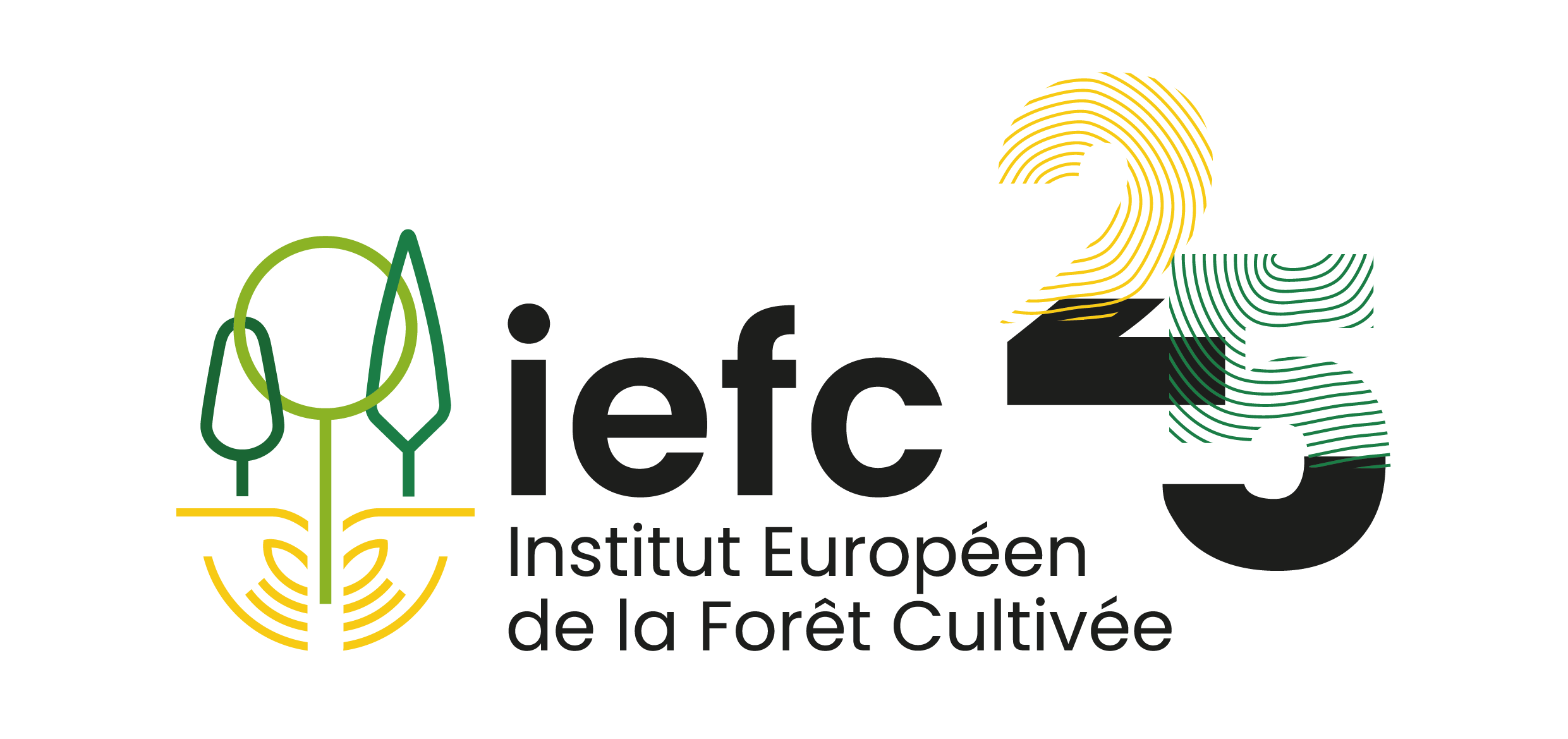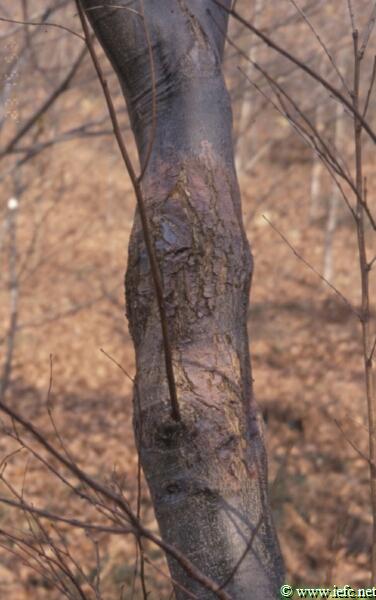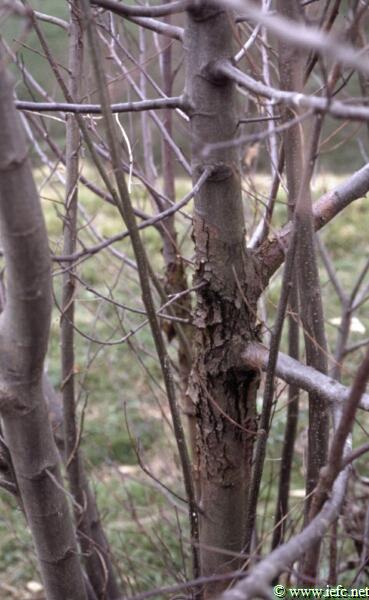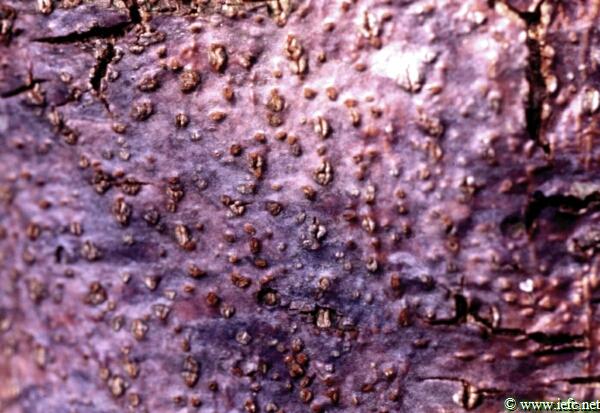Chestnut blight
Cryphonectria parasitica (Ascomycota, Diaporthales).
Synonym: Endothia parasitica
Asexual stage: Endothiella parasitica
Host tree
Chestnut (Castanea sativa), Evergreen oak (Quercus ilex), Pubescent oak (Quercus pubescens) and Durmast oak (Quercus petraea).
Identification
- Presence of dead branches with brown, wilted leaves which surpass the crown (dieback).
- Presence of cankers on trunk, branches, shoots or sprouts. In the beginning the presence of a canker is visible by a reddening and swelling of the bark. Later on cracks appear which split open longitudinally (Photo 1 and 2).
- On the canker orange or yellow pustules (1,5 -2 mm in diameter) can be seen (Photo 3).
- Presence of water sprouts just below the canker.
- Development of yellowish mycelial fans under the bark (Photo 4).
Damage
- Mortality of the distal part of the tree: dying of shoots, branches and even the tree, if the disease affects the trunk.
- In more tolerant hosts (in Europe mainly Quercus species and Castanea hybrids) or when the disease is caused by hypovirulent (= less aggressive) forms of C. parasitica cankers appear as perennial healing cankers or superficial infections of the bark and cause less damage.
Biology
- The fungus enters the bark via wounds (pruning wounds, mechanical damage, natural fissures) as it cannot infect the healthy bark. It invades successively the bark and wood.
- The fungus appears as yellow to orange pustules on the affected bark, where asexual or sexual spores are formed in special structures. Asexual spores are mainly produced in spring and autumn and dispersed by birds, insects, mites or rain. Sexual spores are transported in spring over longer distances by the wind.
- Both type of spores germinate at temperatures between 18-38ºC and both can cause new infections.
- After germination mycelia develops quickly beneath the bark, until the death of sprouts and branches.
Risk factors
- Pruning is a high risk factor.
Pest management
Preventive measurements
- Removal of infected branches.
- Disinfection of pruning tools.
- Destruction of pruning residues.
Curative control
- Around the canker: inoculation with hypovirulent (= less aggressive) strains of the fungus (belonging to the same Vegetative Compatibility Group (VCG) as the virulent strains).




